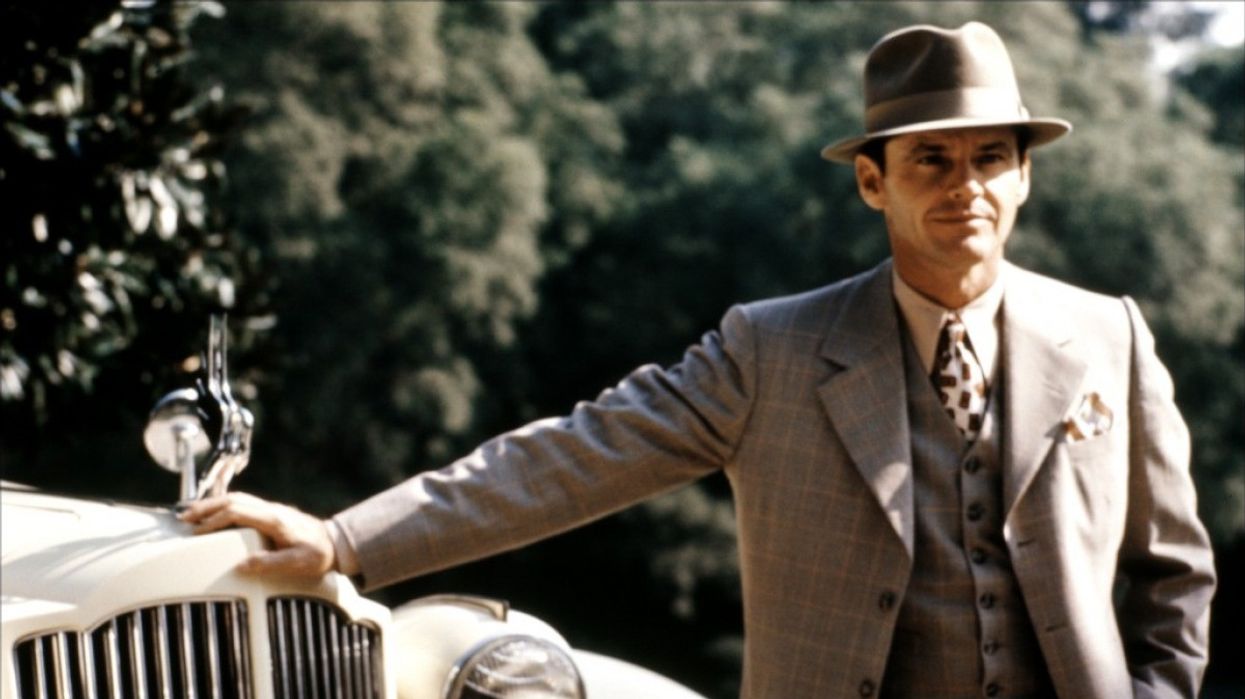Listen to Roger Deakins, Kim Peirce, James Newton Howard, and Steven Soderbergh Talk 'Chinatown'
Chinatown is a masterpiece. Listen to some great filmmakers discuss what made it so special.

Every time you watch Chinatown you see something new. There are so many layers to the movie. The screenplay, written by Robert Towne, is maybe the best of all time. (You can read about its development and the attachment of Roman Polanski in the book The Big Goodbye.)
The movie was a who's who of the 1970s. From starring Faye Dunaway and Jack Nicholson to being produced by Robert Evans, and to seeing Nicholson act across from his girlfriend's dad... legendary director John Huston.
Everything about the movie was special and singular. It was both a reinvention of film noir and an homage to some of the best movies of the past.
But aside from reading that book and appreciating the movie myself, I loved watching this video put together by Cinematographers on cinematography where Hollywood superstars talk about how the film has influenced them.
Check it out below, and let's talk after the break.
Listen to Roger Deakins, Kim Peirce, James Newton Howard, and Steven Soderbergh Talk Chinatown
One of the things I really like about these kinds of videos is that it shows our great artists admiring other art. It makes Hollywood feel accessible and also doesn't freak me out about making a movie or writing a script as good as Chinatown one day.
Seeing cinematographer Roger Deakins, directors Steven Soderbergh and Kimberly Peirce, and composer James Newton Howard take turns chatting about the virtues of the film over the course of half an hour was special. From hearing where they saw it first, to taking a more technical guide to the movie's filmmaking and storytelling.
I love how Peirce described it as a movie where "the ground is shifting underneath you." And one of my favorite parts was when Soderbergh talks about the brilliant fictionalization of history. We understand that this fictional approach is the best way to tell the real history of water in Los Angeles.
Another great point was the technical aspects on display. Hearing Peirce and Soderberg discuss the handheld scenes and cutting of the angles to make sure it still felt classical. Polanski is economical and complex, shooting anamorphic and going handheld, which is bold!
Deakins extols the linking shots, pacing, and choices in cinematography that feel like clues in and of themselves. Soderbergh praises the long takes within the film that are almost impossible to notice because they key off the blocking of the actors.
There's also a richness in the characters and their payoffs. The construction of each plot point is a domino that rolls out in what Deakins called a "mechanical way." Each beat makes the one before it matter and feel smart.
Obviously, these characters are all given unpredictable payoffs. But if you worked the story backward you could almost see it coming. There was no way this could end in anything but a tragedy.
Of course, we can't talk about this movie without praising the core. Howard tells us how the music sets the tone right from the beginning. The trumpet and the piano are clearly defined within the first five minutes. There's a sweeping sound with an Asian quality that alludes to Chinatown. Listening to Howard talk about Goldsmith's influence on Hollywood and the composers that came after is a delight. It's a restrained score that uses polyrhythms so that different parts of the orchestra play at different times. It was avant-garde but done in a skillful way with romantic overtones.
What were your favorite parts of the video? Let me know in the comments.
Source: Cinematographers on cinematography











